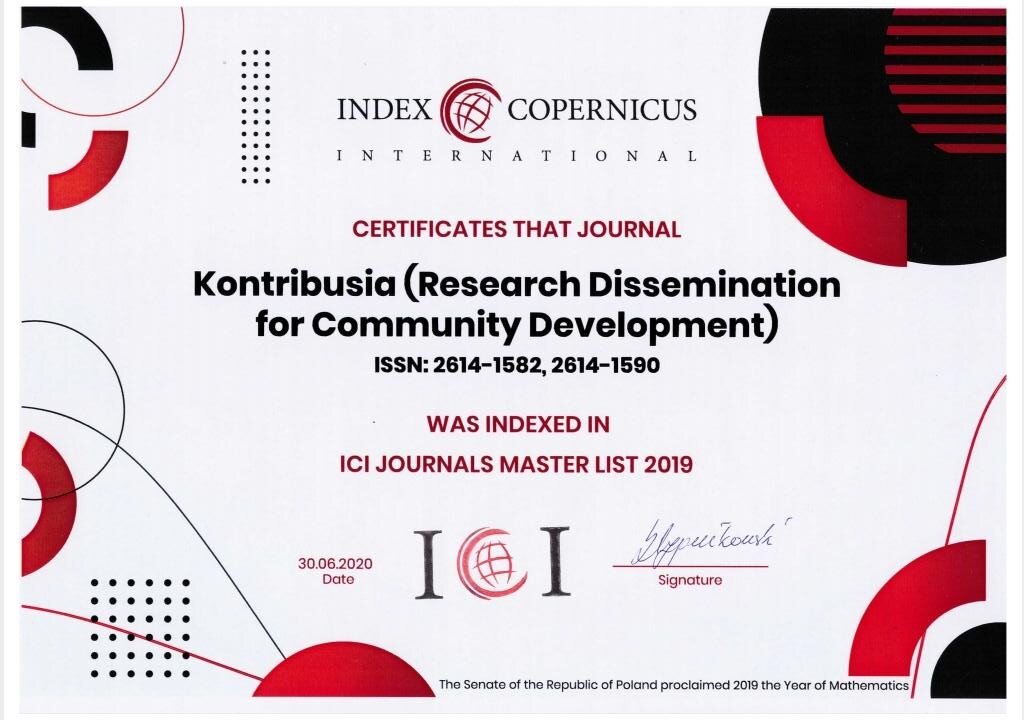Mass Production and Growth Performance of Spirulina on Salinity Reduction
DOI:
https://doi.org/10.30587/kontribusia.v4i1.1580Keywords:
Cyanobacteria, Cells density, Large-scale culture, Spirulina, Water QualityAbstract
Abstract: Spirulina, multicellular and filamentous cyanobacterium, has already known for its bioactivities as functional food and fishes diets. In this study, mass production of Spirulina was demonstrated in modified salinity for 25 days. The aims of this study was to determine the best salinity to obtain optimal growth rate of Spirulina. The cultivation method were small to large-scale and evaluated the water quality. Results showed that salinity reduction influence algal biomass. Spirulina’s density was 41.8x103 cells ml-1 in 15 ppt; 81x103 cells ml-1 in 20 ppt; 145x103 cells ml-1 in 23 ppt; 160x103 cells ml-1 in 25 ppt; and 270x103 cells ml-1. After cultivated in large-scale production, the most efficient treatment was 20 ppt with the cells density 510x103 cells ml-1 in 23th day in salinity 20 ppt. The results suggest that mass-produced Spirulina can be characterized using modificated salinity technique.










